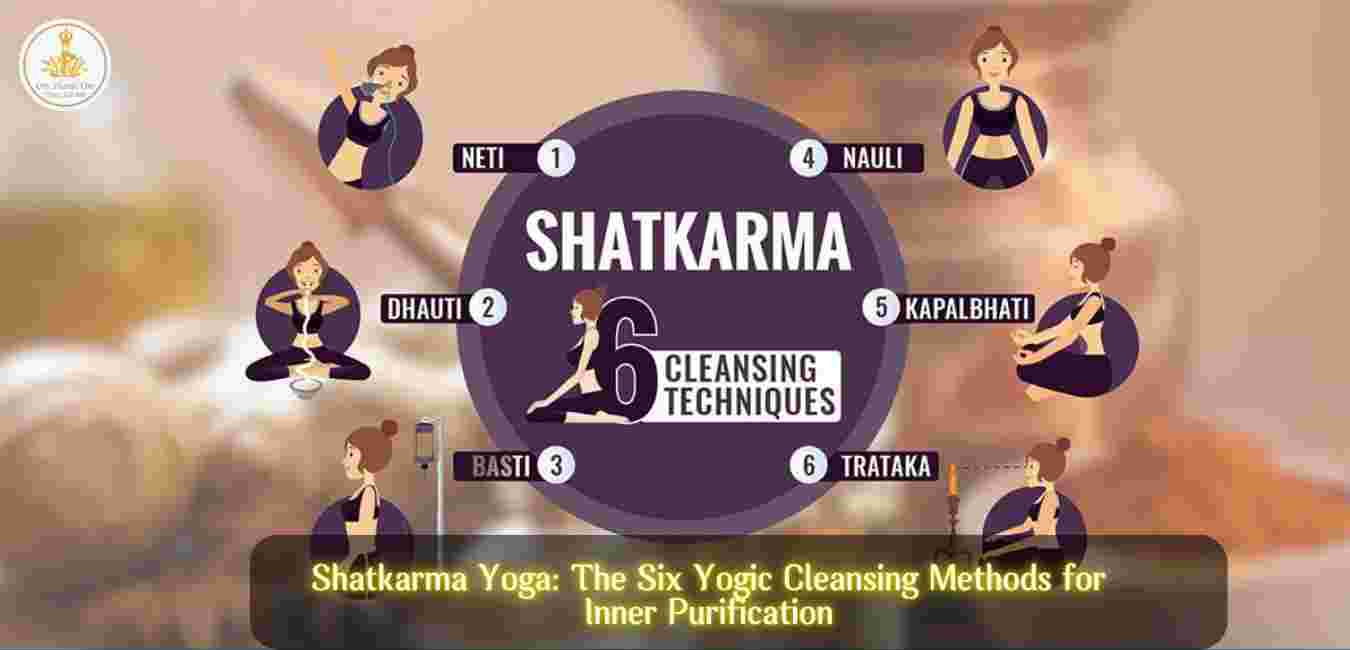The term shatkarma (or shatkriya) is derived from two Sanskrit words: “shat” meaning six, and “karma” meaning action or process. Together, shatkarmas refer to the six purification techniques that are described in classical yogic texts such as the Hatha Yoga Pradipika and Gheranda Samhita.
These techniques are considered the foundation of Hatha Yoga practice, as they cleanse the body of accumulated toxins, improve bodily functions, and prepare the system for higher practices.
Why Are Shatkarmas Essential in Hatha Yoga?
In Hatha Yoga, the purification of the body is not merely physical but also energetic and mental. The shatkarmas aim to:
-
Remove toxins and waste from the digestive, respiratory, and nervous systems.
-
Balance the doshas (Vata, Pitta, and Kapha) as per Ayurveda.
-
Open the energy channels (nadis) for smoother pranic flow.
-
Strengthen the immune system and increase vitality.
-
Cultivate mental clarity and emotional stability.
-
Prepare the practitioner for advanced yogic disciplines like pranayama, mudra, and dhyana (meditation).
Without these preliminary cleansing techniques, progressing into deeper stages of Hatha Yoga can lead to imbalances or stagnation.
The Six Shatkarmas of Hatha Yoga
Here are the six fundamental shatkarmas as described in traditional yogic scriptures:
1. Neti (Nasal Cleansing)
Neti is a technique for cleaning the nasal passages and sinuses.
-
Jala Neti involves using warm saline water passed through one nostril and expelled through the other using a neti pot.
-
Sutra Neti uses a soft rubber or cotton thread passed through the nostril and pulled out through the mouth.
Benefits: Improves breathing, alleviates allergies and sinus issues, and enhances mental clarity.
2. Dhauti (Cleansing of the Digestive Tract)
Dhauti consists of several practices for cleansing the esophagus, stomach, and intestines.
-
Vamana Dhauti (Kunjal Kriya) involves drinking saline water and vomiting it out to cleanse the stomach.
-
Vastra Dhauti uses a cloth to clean the stomach lining.
-
Danda Dhauti involves using a soft stick or finger to stimulate vomiting.
Benefits: Improves digestion, removes acidity, and promotes detoxification.
3. Nauli (Abdominal Churning)
Nauli is a dynamic technique involving the isolation and rotation of abdominal muscles.
-
The abdominal muscles are contracted and moved in a wave-like motion while holding the breath.
Benefits: Stimulates digestion, balances internal organs, and massages the intestines.
4. Basti (Yogic Enema)
Basti is a technique for cleansing the colon.
-
Traditionally, it involved drawing water into the colon through the rectum using yogic techniques.
-
Modern practitioners often use an enema kit for this purpose.
Benefits: Removes waste from the large intestine, balances Vata dosha, and improves elimination.
5. Kapalabhati (Skull-Shining Breath)
Though often mistaken for a pranayama, kapalabhati is actually a shatkarma involving rapid, forceful exhalations.
Benefits: Cleanses the lungs and sinuses, energizes the brain, and enhances concentration.
6. Trataka (Gazing Practice)
Trataka involves gazing steadily at a fixed point or flame without blinking until tears begin to flow.
Benefits: Strengthens eye muscles, improves focus, and purifies the mind by increasing single-pointed concentration.
Integration of Shatkarmas in Hatha Yoga Practice
In Hatha Yoga, the shatkarmas are not just preliminary exercises but are considered sacred rituals that align the physical and energetic bodies. A regular practice of these techniques, under the guidance of a qualified teacher, can significantly accelerate one's progress in yoga.
Before practicing advanced asanas or pranayama, it is essential that the body is free from blockages and imbalances. The shatkarmas serve as that bridge between the gross and the subtle, allowing for a harmonious integration of body, mind, and spirit.
Safety and Precautions
While the benefits of shatkarmas are immense, it is crucial to practice them with proper guidance, especially techniques like nauli, basti, and dhauti, which can be intense for beginners. Consulting a trained Hatha Yoga teacher ensures correct technique, frequency, and individual suitability.
Conclusion
The shatkarmas Hatha Yoga are profound tools for inner purification and transformation. Far beyond mere physical hygiene, they cleanse the subtle energies and mental impressions that hinder growth and clarity. By incorporating these practices, Hatha Yoga becomes not just a physical discipline, but a holistic path toward health, awareness, and spiritual realization.




